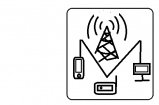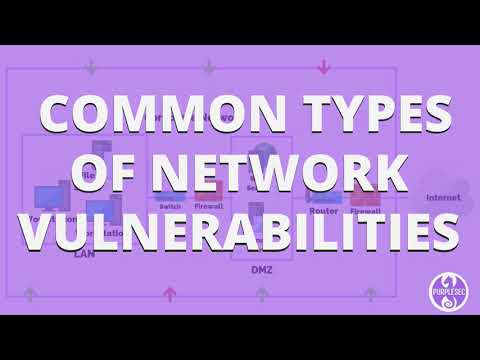Common Types Of Network Security Vulnerabilities In 2023 | PurpleSec
Network security vulnerabilities are constantly evolving as threat actors seek new and intuitive ways to gain access to a business’s network. In this video, I’m going to breakdown the most common types of network vulnerabilities that threaten the security of your systems in 2022.
Video Chapters
——————————
00:00 – Introduction
00:17 – What Is A Network Vulnerability?
01:34 – What Are The Types Of Network Vulnerabilities?
02:34 – Malware (Malicious Software)
09:12 – Social Engineering Attacks
16:16 – Outdated Or Unpatched Software
17:33 – Misconfigured Firewalls And Operating Systems
20:50 – Conclusion
About The Author
——————————
Jason Firch, MBA
https://purplesec.us/cyber-security-experts/jason-firch/
Related Videos
————————-
► What Is Vulnerability Management? (Explained By Experts)
► 7 Data Loss Prevention Best Practices
► The 3 Types Of Security Controls
► Red Team VS Blue Team: What’s The Difference?
► What Is A Security Operations Center?
► What Are The Types Of Penetration Testing?
► Firewall Penetration Testing: Steps, Methods, & Tools:
Resources & Links
——————————
What Is A Network Vulnerability?
https://purplesec.us/network-vulnerability/
50 Free Information & Cyber Security Policy Templates
https://purplesec.us/resources/cyber-security-policy-templates/
What Is A Network Vulnerability?
A network vulnerability is a weakness or flaw in software, hardware, or organizational processes, which when compromised by a threat, can result in a security breach.
Nonphysical network vulnerabilities typically involve software or data. For example, an operating system (OS) might be vulnerable to network attacks if it’s not updated with the latest security patches. If left unpatched a virus could infect the OS, the host that it’s located on, and potentially the entire network.
Physical network vulnerabilities involve the physical protection of an asset such as locking a server in a rack closet or securing an entry point with a turnstile.
Servers have some of the strongest physical security controls in place as they contain valuable data and trade secrets or perform a revenue-generating function like a web server hosting an eCommerce site. Often stored in off-site data centers or in secure rooms, servers should be protected with personalized access cards and biometric scanners.
Prior to investing in security controls, a vulnerability risk assessment is performed to quantify the cost and acceptable loss of the equipment and its function. As with all things in cyber security it’s a balancing act of resources vs functionality that makes for the most practical solutions.
► If you need help securing your business from cyber attacks then feel free to check out: https://purplesec.us
► Follow us on Twitter: https://twitter.com/Purple_Sec
► Find us on Pinterest: https://www.pinterest.com/purple_sec/
#networksecurity #vulnerabilities #cybersecurity
Views : 37407
cyber security
Source by PurpleSec (Becoming SecureTrust Cybersecurity)




